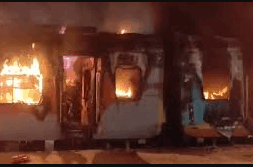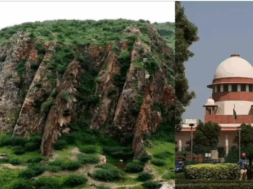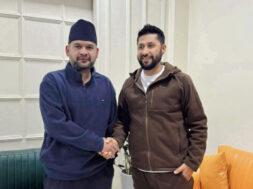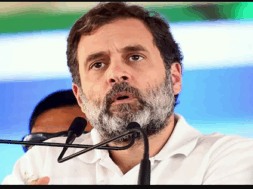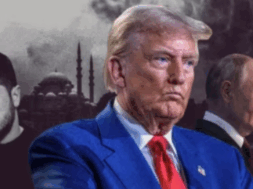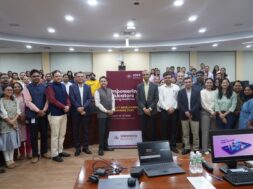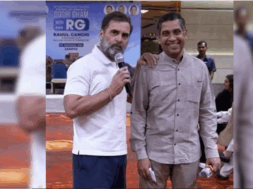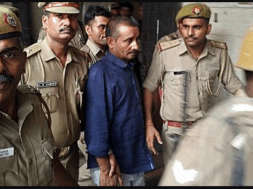
Roving Periscope: Wheel turns full circle—Nepalis want their king back!
Virendra Pandit
New Delhi: Deeply unhappy with what the various combinations of China-supported Communists have done to their country over the last two decades of instability and poverty, many Nepalis now want their king back to power in Kathmandu.
In Hindu-majority Nepal, the monarch has historically been seen as the reincarnation of Lord Vishnu.
India has always had an umbilical cord with the Himalayan nation. Not only is Nepal seen as the land of Sita, wife of Lord Ram—an incarnation of Lord Vishnu—but the Scindias of Gwalior are also closely related to the rulers of the mountainous country. The world-renowned Gurkha soldiers adorned the British and Indian armies for centuries. Millions of Nepalis worked freely in India over centuries as there were no restrictions between the two countries.
In January, a large number of Nepalis came to Ayodhya with gifts at the time of the consecration of Lord Ramlala’s Temple in Uttar Pradesh, underlining the age-old relations between the two neighboring nations.
These age-old relations got a jolt 16 years ago when China-sponsored, Communist-led, and anti-India protests forced then-King Gyanendra Bir Bikram Shah to step down and clear the way for a republic.
Nepal has seen widespread political instability and 13 governments since the monarchy was abolished in 2008. Now, a new wave of protest is aiming to bring him back to power, the media reported on Tuesday.
Kathmandu is again teeming with demonstrators, this time demanding that the Shah be reinstated as king and Hinduism brought back as a state religion. Royalist groups accuse the country’s major political parties of corruption and failed governance and say people are frustrated with politicians.
“Long live our beloved king. We want a monarchy again,” the crowd chanted at a rally in February in the Nepalese capital.
Growing frustration with the present Communist-run system, wherein the government is suspected of capitulating to China and even surrendering land to it, has led to calls for radical change. Pro-monarchy rallies have been growing larger, and an increasing number of homes and businesses are displaying portraits of the former king and his predecessors.
King Gyanendra was a constitutional head of state without executive or political powers until 2005. Concerned at the growing influence of China-supported saboteurs, he seized absolute power, disbanded the government and parliament, jailed politicians and journalists, and cut off communications, declaring a state of emergency and using the army to rule the country.
Protests that drew hundreds of thousands of people, however, forced him to abandon the throne and give up power to the parliament in 2006. Two years later parliament voted to abolish the monarchy and Gyanendra left the Royal Palace to live the life of a commoner.
However, many Nepalis have grown frustrated with the republic for failing to bring about political stability and blaming it for a struggling economy and widespread corruption.
In the last two decades, they concluded that elected politicians are more interested in power and patronage than addressing their problems and are thinking in terms of restoring their monarchy, the media reported.
In November 2023, thousands rallied in support of the king in Kathmandu, where riot police officers used batons and tear gas to halt them from marching to the center of the national capital.
With polls and surveys rarely conducted in Nepal, it’s not clear how many people support the monarchy. Gyanendra became a much-maligned king because of the Communist propaganda, but the monarchy remained largely popular.
Fearing reprisals now, Nepal’s major political parties have rejected the possibility of the king returning to power.
“Nepal is a republic and the monarchy will never be reinstated,” the media quoted Narayan Prakash Saud of Nepali Congress, which led the revolt against the king in 2006 and is currently the largest party in parliament, as saying.
The only way it could become possible would be through changing the constitution, but there is no possibility of that happening at all, he claimed.
The most powerful group supporting the restoration of the monarchy is the Rastriya Prajatantra Party, founded in the 1990s by the monarchists. It has only 14 seats in the 275-member House of Representatives but wields an increasing influence as a representative of the revivified protest movement.
Since his abdication, Gyanendra has stayed out of politics, and only rarely makes public appearances.
Nepal’s monarchy did not allow political parties to form until 1990 when a pro-democracy movement led to elections and reduced the monarchy to a ceremonial role.
Gyanendra became the monarch after his elder brother, then-King Birendra, and his family were killed in a massacre at the Royal Palace in 2001.


